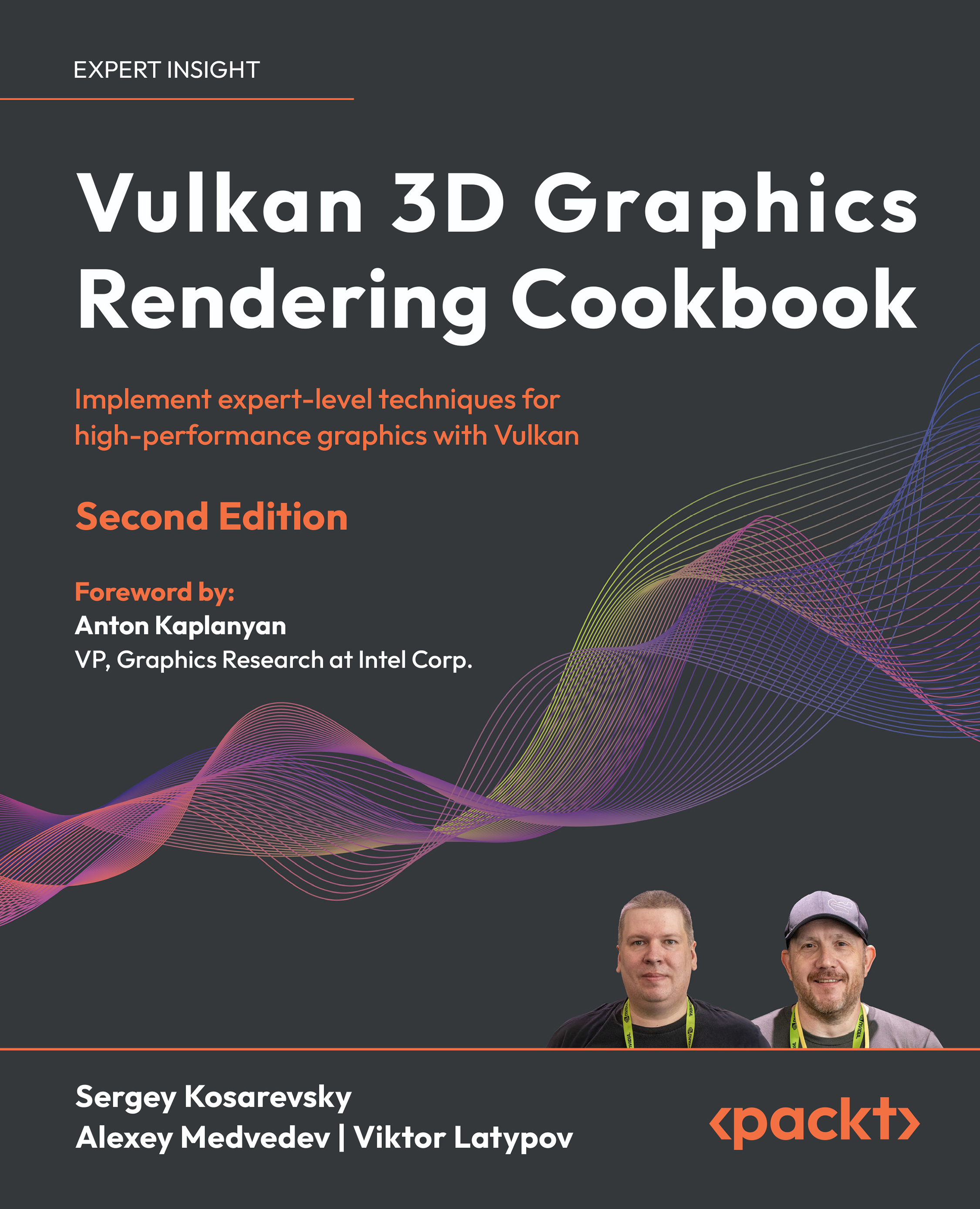Putting it all together into a scene editing application
In the previous recipes, we introduced a significant amount of scaffolding code to manage the scene hierarchy, handle materials, and prepare GPU buffers for rendering. Now, let’s put all of that together by implementing a complete scene-rendering application based on those code fragments. To make the application even more engaging, we will add some scene graph editing capabilities, allowing us to interactively modify and update the scene in real time.
Getting ready
Before proceeding with this recipe, be sure to revisit the recipe Implementing indirect rendering with Vulkan along with all the related recipes to review the data structures we use for storing and managing our scene. This will ensure you have a solid understanding of how everything fits together before diving into the next steps.
The source code for this recipe is located at Chapter08/02_SceneGraph.
How to do it...
Let’s go through...



























































